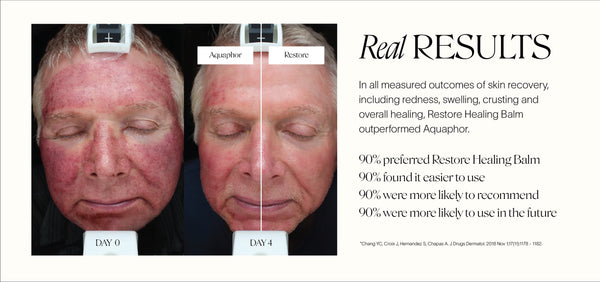Skin Recovery with Doctor Rogers
“My work isn’t done when a patient leaves my office. Optimal results require exceptional post-procedure care.”
- Heather D. Rogers, MD
Dr. Rogers created her namesake line to give her patients superior products to use during the healing process after in-office treatments to ensure the best possible outcomes. This includes, but is not limited to lasering, microneedling, peels, tattoos, surgery and so much more.
Clinically tested and hypoallergenic, the Heal and Essential Collections are safe to use on healing skin and result not only in quicker recovery, but also better results.
- Face Wash: A gel cleanser to gently wash, calm irritation and promote healing. Your skin will feel soothed and refreshed after any procedure.
- Face Cream: An intense moisturizer to rebuild skin, reduce swelling, and minimize redness. This cream will leave your skin feeling hydrated and nourished.
- Restore Healing Balm: A clinically effective ointment to protect healing skin, speed recovery, and lock in moisture. This balm will calm irritation while quickly healing any damage.
Do not incorporate any treatments including vitamin C serums, retinols, or acids into your skin care regimen until your skin is fully healed. All products in Doctor Rogers Heal and Essential collections are made to use on recovering skin. The Advance collection is only for intact skin.

Doctor Rogers Heal and Essential Collections are safe to use after the following procedures:
Gentle Procedures:Broadband Light (BBL), Clear + Brilliant, Dermapen, Dermaplaning, Excel-V, Excilis, Intense Pulsed Light (IPL), LaseMD, Microdermabrasion, Plasma Pen, Superficial Chemical Peel, Thermage, Ultherapy, V-Beam
Aggressive Procedures:Active FX, CO2, Deep FX, Efudex, Erbium, Fraxel Dual, Frazel Repair, Genius, Halo, Icon, Infini, Medium Depth Chemical Peel, Microneedling, Morpheus8, Photodynamic Therapy (PDT, Profound, Total FX
These recommendations are not sponsored. They are the result of Dr. Heather D. Rogers, MD evidence-based research and extensive clinical experience.
To learn more, sign-up HERE to receive weekly educational newsletters from our founder and dermatologist, Dr. Heather D. Rogers, MD.
The information on doctorrogers.com and our social media channels, including articles, newsletters, videos, blogs and related links, are provided for general information and educational purposes only. There is no doctor-patient relationship implied and it is not a substitute for obtaining medical advice from your physician. Use of this information and recommended products on this site is at your own risk. Further, their use indicates your agreement with the Terms and Conditions of doctorrogers.com. There is no intent to diagnose or treat any specific medical problem through any of the information shared. Additionally, information shared here is not an extension of the medical care Dr. Rogers provides at her practice.

